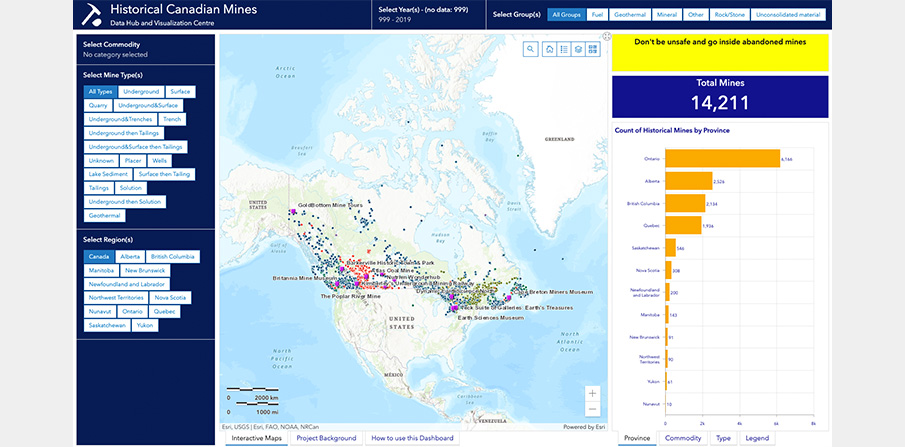Lynn Greiner - 27 April 2022
Donna Beneteau’s database encapsulates over 14,000 mines from the 1700s until now.
After almost a decade of work, a comprehensive database of mining’s history in Canada has been released to the world
Canada’s mining industry has a history that pre-dates even the formation of the country. Thousands of mines have come (and many have gone). So why, wondered Donna Beneteau, assistant professor in the University of Saskatchewan’s Department of Civil, Geological, and Environmental Engineering, was there not a comprehensive list of Canadian mines, past and present?
In 2013, she began to gather data for what she calls her hobby project, hunting down information.
“It all started because when I went looking, there was nothing there,” she said. “It took me a while, I just would play and find out where the data was about where mines were. And I built the whole big database by myself.”
Today the database consists of more than 90,000 records covering over 14,000 mines. According to the data, the first mines in Canada are documented in the 1700s, the peak in the number of mines was around 1930 and since the 1990s, there has been a steady decline in numbers.
After being turned down twice for government grants to fund the work, she approached CIM’s Underground Mining Society (UMS), of which she was chair at the time, and with the group’s help was able to hire a summer student to validate what she’d collected. The project has now received support from the University of Saskatchewan (USask) College of Engineering, and the Canadian Hub for Applied and Social Research (CHASR) at USask as well.
A November 2019 article in CIM Magazine chronicled her journey to that point of the work in progress. Now, the project has come to fruition thanks to Beneteau’s continued work in acquiring data for the parts of the country she had not completed (in 2019 she was still working on part of British Columbia and all of Alberta, Ontario and Quebec) and the talents of the team led by Tayyab Shah, geospatial research manager and specialist at the Canadian Hub for Applied and Social Research at the University of Saskatchewan, who built out the maps.
“It took a lot of time in the beginning,” Shah observed. “Three to four months in brainstorming and designing the whole thing.”
After the months of conceptualization, the team had to decide on a platform – it looked at Tableau (an analytics platform owned by Salesforce), Microsoft’s Power BI, and Shiny (an R language package for building interactive web apps) before setting on ArcGIS, a mapping and analytics product from ESRI.
The result: The Historical Canadian Mines Data Hub and Visualization Centre (“The Hub”), a platform for accessing, storing, visualizing and continued collection of information on mines in Canada throughout history and up to the present day. It provides access to location information, as well as operational and production details, of mines that operated within Canada as long ago as 1774. Using the map tabs and filter settings, users can visualize trends in mining operations across the country over time, look at where various resources were found, view details on specific mines of interest or explore many other facets of mining.
“I thought this [project] was great, because it falls into something that a lot of young people would like to use to find out where things are happening,” said mining engineer George Darling, who is now chair of the UMS. “[Beneteau] requested some funding to help with the database and help people put it together, and we said, ‘Sure we’ll fund it, it’s a good project.’ Now, it will be a wonderful database for all historical to present mining operations.” He sees students or job seekers using it to determine what is being mined where, and by whom, and as a reference for papers. Companies looking for mergers and acquisitions could also use it to research the local landscape.
And more features are coming soon, Beneteau said, such as the ability to attach a file of additional data to each mine on the map. She also hopes to add another layer showing museums and exhibits about mining, and one about key mining inventions, so people can learn about the field. And she is asking the industry to help fill in any blanks.
“I don’t know what it will become,” she said. “This was just my dream. And I’m willing to look after it and keep building it. But I want it to be CIM’s, I want it to be our community’s. I don’t want people to say Donna’s database. I want it to be CIM’s database, because I think it’s going to take all of the industry to fill it in.”
The Hub database can be accessed via CIM.org/the-hub. If you have questions and/or would like information on this project, you can send them by email to: minesdatabase@cim.org
 - dev.png)


